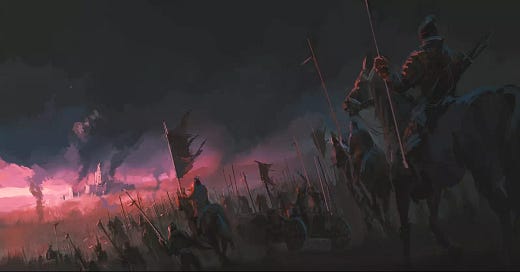Kabbalistic Safed - Divine City on a Hill
Potential refuge from the destruction of Israel in the Gog-Magog War
The prophesied Gog-Magog War, as described in the Book of Ezekiel, has long captivated theologians and spiritual seekers alike. An aspect of Ezekiel’s account that merits focused exploration is the prospect of divine intervention to preserve Israel from complete annihilation.
This essay examines the potential manifestation of this intervention, examining the possibility that Safed — known as the 'City of Kabbalah' — could serve as a sanctuary for a remnant of True Israel.
Ezekiel describes Gog as the prince of Magog, who leads a grand coalition of nations against Israel in the end times. This alliance comprises nations from both historically familiar regions and those whose identities remain obscure.
According to prophecy, God draws Gog to Israel to demonstrate His sovereignty, intervening decisively to destroy Gog’s forces and affirm His dominion to all nations:
Then I will knock the bow out of your left hand, and cause the arrows to fall out of your right hand. You shall fall upon the mountains of Israel, you and all your troops and the peoples who are with you; I will give you to birds of prey of every sort and to the beasts of the field to be devoured.
Ezekiel 39:3-5
As a potential sanctuary for a preserved remnant, Safed presents a compelling possibility. Known for its elevated geography and historical role as the center of Jewish mysticism, Safed possesses qualities that align it with Ezekiel’s vision of a protected remnant. In this post, we explore Safed’s deep-rooted mystical traditions, its connection to the Shekinah, and its symbolic significance as a refuge and testament to divine protection during the Gog-Magog War.
Safed
Safed, also known as Tzfat, is a city perched atop a mountain in Israel's Upper Galilee region. Revered as a ‘Divine City on a Hill,’ Safed holds considerable significance in Jewish mysticism (Kabbalah). Attracting numerous prominent Kabbalistic scholars, Safed solidified its position as a center of spiritual importance for Jewish people worldwide. Safed's elevated location further enhances its mystical aura and reinforces the ‘city on a hill’ imagery.
In this essay, we envision the possibility that Safed will shelter Ezekiel’s remnant of True Israel — a divinely protected mountain sanctuary amidst the turmoil of war. This essay further explores Safed’s unique role as a spiritual stronghold and refuge, symbolizing divine intervention, preservation, and spiritual victory.
Our exploration will carry us into Jewish mysticism, a discipline often unfamiliar even to many Jews, let alone most Christians.
In recent months, Israel’s ongoing conflict with Hezbollah has brought heightened tensions and disruptions to Safed and surrounding areas. While the city has not faced full evacuation, residents experience frequent alerts and often have only seconds to reach safety when Hezbollah rockets target the region.1
From high in the Galilee mountains, Safed possesses a unique mystical allure, distinct from Israel’s other holy cities of Jerusalem, Hebron, and Tiberias, whose sanctity is rooted in ancient biblical traditions. Safed’s spiritual significance blossomed in the 16th century when it became a refuge for Kabbalists fleeing persecution in Europe.
This period saw figures such as Rabbi Isaac Luria, known as the Ari, and Rabbi Joseph Caro, author of the Shulchan Aruch, establish Safed as a preeminent center of Kabbalistic thought, solidifying its status as one of Judaism’s four holy cities.
Surveying Safed's spiritual significance, we will delve into its rich Kabbalistic heritage and potential role as a sanctuary during the prophesied Gog-Magog War. Drawing upon Ezekiel's vision and Kabbalah, we will examine how Safed's unique spiritual character could offer protection and hope during societal upheaval.
Safed's Spiritual Heritage and the Shekinah
Safed’s association with the Shekinah, the indwelling divine presence and feminine aspect of God in the Kabbalistic tradition, forms a cornerstone of its spiritual heritage. In Kabbalah, the Shekinah represents the divine presence that dwells among the faithful and bears a unique connection to the land of Israel.
Some Kabbalistic teachings propose that, after the destruction of the Second Temple in AD 70, the Shekinah retreated to Safed to symbolically await fulfillment of her reunification with Israel.
Divine Intervention and Miraculous Protection
As enemy forces ravage the land, Safed, elevated both physically and spiritually, could be miraculously spared. The city’s deep-seated Kabbalistic practices may act as a metaphysical barrier against the chaos, shielding Safed as a sanctuary for those devoted to God’s commandments.
This divine intervention aligns with Ezekiel’s prophecy, where God’s mercy preserves a faithful remnant of Israel. Safed’s devotion to Jewish law (Halakha) and the Torah stands in sharp contrast to the secular elements of Israel, particularly in the nation’s capital, Jerusalem, and in political Zionism.
With its centuries-long history as a center of Jewish mysticism, Safed stands apart from the modern political project of Zionism, which prioritizes national identity and territorial claims over strict adherence to religious law.
This raises a poignant question for Christians: How shall the biblical mandate to “bless Israel” be understood? Does it apply to True Israel? To Zionism? The key is to seek divine wisdom in how to love and bless the Jewish people while seeking justice for all.
To clarify, True Israel embodies a commitment to divine law that transcends political boundaries or nationalist agendas. It exists in mystical havens like Safed, where adherence to Halakha and the Torah remains paramount.
Divine law, rooted in spiritual and ethical principles, emphasizes a commitment to God’s commandments that is fundamentally indifferent to the shifting tides of secular political agendas.
Moreover, it is impermissible, even blasphemous, to manipulate sacred scripture to justify political agendas. We bear a responsibility to interpret and apply biblical teachings in a way that honors God's commandments and promotes justice and compassion.
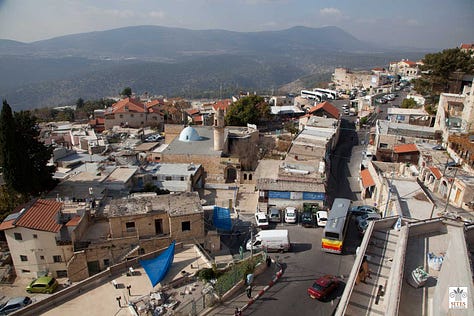
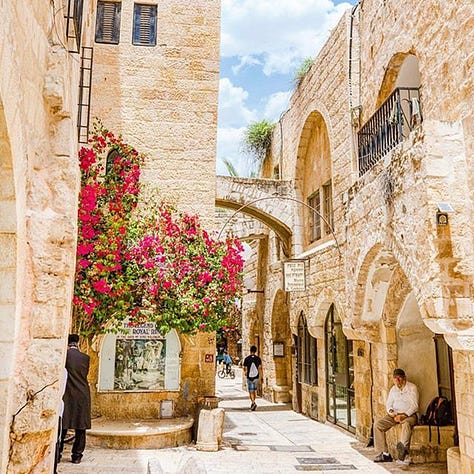
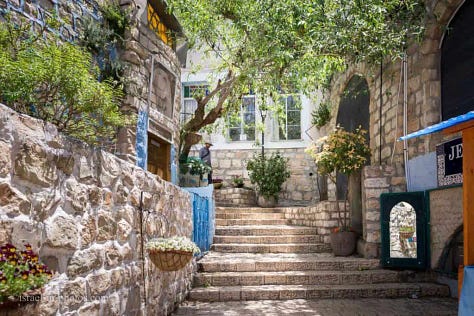
Safed as a Spiritual Refuge
Kabbalah, the mystical tradition of Judaism, seeks to unveil the hidden dimensions of reality and the divine realm. Through its symbolism, metaphor, and mystical concepts, Kabbalah provides insights into the deeper meanings of Jewish scriptures and traditions. Safed became a major center for Kabbalistic study, particularly through the teachings of Rabbi Isaac Luria, who introduced transformative concepts that continue to shape Jewish mysticism today.
Lurianic Kabbalah emphasizes tzimtzum — the divine contraction where God withdrew to create space for the universe — and tikkun olam, or ‘repairing the world,’ which represents humanity’s responsibility to restore harmony to creation.
Lurianic Kabbalah also delves into the dynamics of the Sefirot, divine emanations that structure the universe and reflect the interaction of spiritual forces. This framework not only deepens the understanding of the individual’s role in the cosmic drama but aligns with Safed’s commitment to divine law and spiritual harmony.
The Zohar
In the heart of Jewish mysticism lies the Zohar, a luminous text known as the "Book of Splendor." Imagine Elena Kotliarker's mesmerizing artwork, "72 Names of God," where vibrant colors dance and intertwine with intricate Hebrew calligraphy (pictured below).
These swirling forms, each representing a divine name, echo the mystical commentaries found within the Zohar, revealing hidden depths within ancient scriptures. Here, in the realm of the Kabbalist, art and text converge, illuminating a pathway to spiritual understanding.
Written primarily in Aramaic, the Zohar explores the nature of Ein Sof — the infinite, unknowable God — and the ten Sefirot, divine emanations that bridge the vastness between God’s infinite essence and our finite reality. As a symbolic map of the cosmos, the Zohar guides seekers through the mysteries of creation, the journey of the soul, and the ultimate goal of restoring the Cosmic Order.
The Zohar's influence extends far beyond its pages, shaping Jewish thought and inspiring other esoteric movements. Even today, its wisdom continues to illuminate the path for those seeking a deeper connection with the divine.
The ‘72 Names of God,’ a concept within Kabbalistic tradition, are derived from three consecutive verses in Exodus 14:19-21, each containing 72 letters. It is held that the 72 Names enclose a powerful spiritual technology, one that can overcome the laws of nature. These are not conventional names, but 72 sequences of Hebrew letters that serve as "tuning forks" to repair the soul and imbue it with high psychonic frequencies.2
Hidden within the Zohar for centuries, this ‘spiritual technology’ was preserved until the right moment for revelation to the world. According to the Zohar, when the moon — representing Malchut, a Divine Feminine archetype — reaches its fullness, it inherits the 72 holy names on three sides, corresponding to the three lines of spiritual energy. Malchut is the only Sefira infused with feminine energy, symbolizing receptivity and divine presence.3
The purpose of the 72 Names is to transmit the Light of Chokmah, the life force known across traditions as prana or qi. This spiritual energy helps individuals realize their own divine potential.
Evolution of the Jewish Concept of God
The Jewish understanding of God has undergone significant evolution, shaped by pivotal historical and cultural influences. Theologian and author Karen Armstrong explores this transformation, arguing that early Jewish conceptions were initially more fluid and included elements of polytheism.
A central theme in Armstrong’s work is the fundamental unknowability of God. Jewish theologians, notably Maimonides, argued that God’s essence transcends human comprehension — so much so that even to assert that God “exists” is to oversimplify a presence beyond our understanding.
She argues that until modern times, Jewish theologians also rejected literal interpretations of scripture, insisting instead on constant reinterpretation. This view resonates deeply with the Kabbalistic tradition upheld in Safed, where the divine mystery invites ongoing exploration and a pursuit of ever-deepening insights into the nature of God.
Armstrong’s final point, in essence, safeguards spirituality from becoming like the barren fig tree Jesus cursed — all outward show with no genuine fruit, ultimately withering into lifeless religious dogma.
On the following day, when they came from Bethany, he [Jesus] was hungry. And seeing in the distance a fig tree in leaf, he went to see if he could find anything on it. When he came to it, he found nothing but leaves, for it was not the season for figs. And he said to it, “May no one ever eat fruit from you again.” And his disciples heard it...
As they passed by [the next morning, they saw the fig tree withered away to its roots. And Peter remembered and said to him, “Rabbi, look! The fig tree that you cursed has withered.” And Jesus answered them, “Have faith in God. Truly, I say to you, whoever says to this mountain, ‘Be taken up and thrown into the sea,’ and does not doubt in his heart, but believes that what he says will come to pass, it will be done for him.
Therefore I tell you, whatever you ask in prayer, believe that you have received it, and it will be yours. And whenever you stand praying, forgive, if you have anything against anyone, so that your father also who is in heaven may forgive you your trespasses.
Mark 11:12-25
Sefirot and the Connection Between Heaven and Earth
In Kabbalistic thought, the Ten Sefirot (singular, Sefira) are divine emanations, attributes of God that structure the universe and form a bridge between the physical and spiritual realms. Each Sefira represents an aspect of divine order, linking heaven and earth in a harmonious interaction that sustains creation.
Safed is a place where this sacred connection is deeply revered and embodied. In the teachings preserved and practiced within Safed, the Sefirot provide a spiritual map, guiding the faithful toward a life aligned with divine intention.
Yet, the existence of cosmic order is often threatened by forces that seek to disrupt divine harmony. This is precisely what Ezekiel’s Gog-Magog prophecy envisions: an ultimate struggle between light and darkness, between those aligned with the divine and those who oppose it.
Gog and Magog
The prophecy of Gog and Magog embodies the ultimate confrontation between divine order and worldly chaos, a theme deeply relevant to Safed’s spiritual heritage. Found in the books of Ezekiel, Genesis, 1 Chronicles, and Revelation, the Gog-Magog narrative has invited varied interpretations, both literal and symbolic.
While some interpret the Gog-Magog War as a literal, future event, others see it as a symbolic representation of the ongoing struggle between good and evil, between those who align themselves with God and those who oppose him. However, it's important to recognize that these two viewpoints are not mutually exclusive.
For example, we could envision regional kinetic conflicts like Gog-Magog occurring simultaneously with global spiritual turmoil and the unraveling of civilized society. Indeed, the current state of global affairs, with its rising tensions and societal unrest, could be interpreted as evidence this cosmic inversion is already underway.
In a previous exploration, Gog, Magog and the Armies of Satan, we examined multiple interpretations of Gog and Magog, emphasizing the importance of recognizing the spiritual dimensions behind geopolitical conflicts. This analysis suggested that a complete understanding of world events requires us to consider both material and immaterial forces at play — forces that, in Kabbalistic terms, are shaped by either divine or opposing influences.
Safed’s role as a center of Kabbalistic insight aligns it with the call for spiritual awakening and unity — a call echoed in Ezekiel’s vision of the “dry bones,” where Israel’s revival serves to inspire humanity to embrace its co-creative role in sustaining the divine order.
Initially, the dry bones imagery (Ezekiel 37:1-14) served as a haunting symbol of spiritual death. Though historically focused on Israel’s national restoration, this powerful image has broader interpretations. It applies to various aspects of human experience and societal challenges, underscoring how sacred texts can hold multiple layers of meaning and remain relevant across contexts and eras.
Symbolic Significance of Safed in the Gog-Magog War
Safed's assumed preservation in the Gog-Magog War carries symbolic significance. It represents the triumph of spiritual resilience over physical might, embodying the notion that the conflict is ultimately a spiritual battle, a clash between the forces of light and darkness, between fidelity to divine wisdom and the Zionists’ allure for material power.
Safed's mystical heritage and its connection to the Shekinah underscore that the Gog-Magog conflict transcends mere physical confrontation, embodying a spiritual battle with far-reaching implications for humanity's fate.
“Hear this word, people of Israel, the word the Lord has spoken against you —against the whole family I brought up out of Egypt… An enemy will surround your land; he will pull down your strongholds and plunder your citadels… Surely the Sovereign Lord does nothing without revealing his plan to his servants the prophets.” (Amos 3)
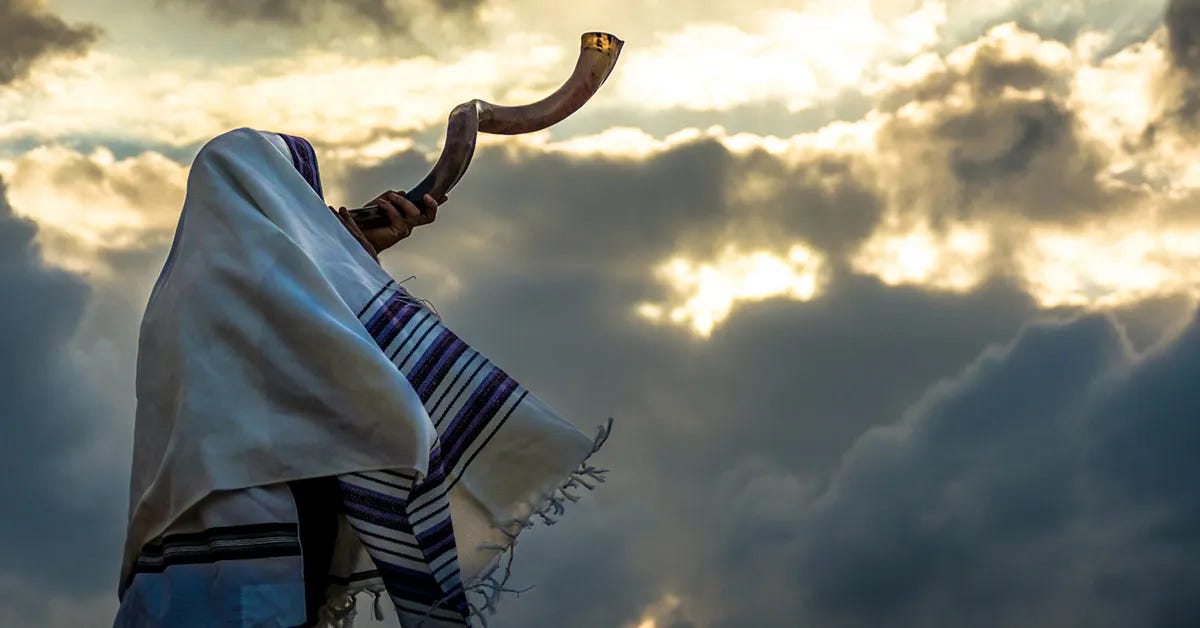
In Blessed Memory, Son David Phan (November 7, 1972 — November 7, 2022).
Heavy rocket barrage targets area around Safed, northern Israel.^
Reaching completion refers to the full moon, representing Malchut at her fullest potential or manifestation. Three sides points to a spiritual concept of balance and completeness. It relates to the three pillars of the Tree of Life (Etz Chaim) in Kabbalah: Severity, Mercy, and Balance. Three lines of spiritual energy represent different aspects of divine energy flowing through creation.
Overall, the passage describes Malchut in her fully realized state, receiving and channeling divine energy through balanced spiritual pathways. This symbolism emphasizes the vital role of the feminine aspect of God in completing the cycle of divine manifestation and unification in the physical world.
On another note, Malchut, Shekinah, and the pagan goddess Asherah are all expressions of the Divine Feminine archetype. In Kabbalistic teachings, Malchut is more commonly used when discussing the structure of the Sefirot system. Shekinah is more often employed when describing God's immanent presence in the world. (More about Malchut [here].)

